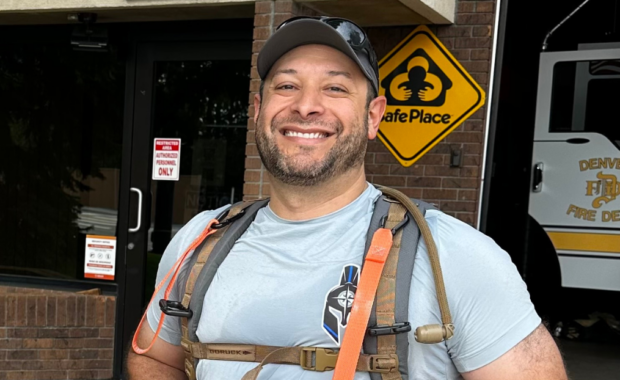Going Above and Beyond: One PA’s Mission to Deliver Critical Care by Air
The monthly commute from Michigan to New Mexico is a small price to pay for PA Braman to practice flight medicine at the top of his education and training
June 16, 2025
By Dave Andrews
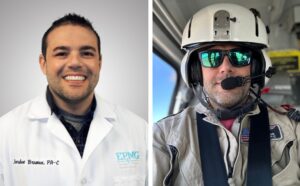
In the field of emergency medical services, every second counts. The slightest hesitation or delay can be the difference between life and death.
Jordan Braman, DMSc, PA-C, EMT-P, learned this lesson long before becoming a PA. His first career as a firefighter and paramedic exposed him to the intensity and urgency of emergency response—experiences that ultimately pushed him to pursue a broader scope in medicine.
After completing his PA training, Braman transitioned into the hospital setting. But he didn’t leave emergency response behind. Instead of racing to calls in a firetruck or ambulance, he now soars to them in a helicopter.
Every month, Braman steps away from his full-time role in the ICU at Chelsea Hospital in Chelsea, Michigan, and travels to New Mexico to work a 96-hour shift as a flight PA for TransAero MedEvac, an air medical transport service. He and his crew, including a pilot and a paramedic, serve a sprawling, mostly rural region in southeastern New Mexico, responding to numerous inter-facility patient transfers and high-stakes emergencies in remote locations.
“For me, it’s thrilling to provide critical care medicine at a high level in a very rural environment,” Braman said. “For some of the areas we serve, it would take more than three hours for an ambulance to arrive. But we’ll get there in a fraction of the time in a helicopter, which in most cases significantly increases our success rate.”
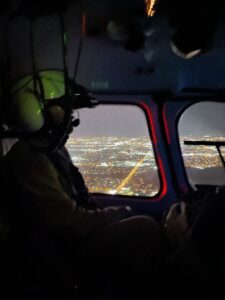
That speed can be the difference between recovery and tragedy. On a recent call, Braman’s crew responded to a patient suffering a stroke deep within Carlsbad Caverns National Park, far from the nearest hospital.
What would have been at least a three-hour drive by ambulance was whittled down to less than 60 minutes in a helicopter—a time difference that proved to be lifesaving.
“Our team was able to quickly arrive and get him to a stroke center in time to get a [Tenecteplase injection],” Braman said. “Thankfully, he made a full recovery. But had he not been transported by air, there would have been no way to get him there within the time-limited window to receive thrombolytics.”
Taking Critical Care to New Heights
Life-saving missions like this have become almost routine for Braman and his team. And with his extensive background in emergency services, he thrives in the kind of fast-paced, high-pressure situations that demand decisiveness, skill, and advanced medical training.
“His ability to identify and manage problems in a critical care setting with a trauma patient—no matter what the situation—is close to unequaled,” said Dr. Robert Fields, DO, ICU, director at Trinity Health in Chelsea and a former colleague of Braman’s.
“From the very beginning [of his PA career], he just excelled at everything he touched,” Dr. Fields continued. “And now, he’s taken it to another level where he’s pushing himself into environments that are even more challenging than intensive care.”
[See Braman and other PAs who go beyond on AAPA’s new Nationwide PA Impact Map!]
A Rare Opportunity for PAs
Finding a role like this wasn’t easy. Opportunities for PAs in critical care flight transport are rare, and many programs only hire nurses or physicians.
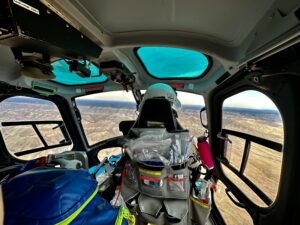
Braman spent years searching for a flight medicine position where he could practice at the top of his education and training. When he discovered that TransAero hired PAs, he jumped at the chance—even though it meant committing to monthly travel between Michigan and New Mexico.
In his view, the commute is a small price to pay for the opportunity. “There are some PAs who work as flight paramedics, but unfortunately, they aren’t allowed to operate up to their full scope, and they essentially function as a critical care medic,” Braman said. “[With TransAero,] I’m able to operate as a true PA, which allows me to do procedures that I otherwise couldn’t do.”
Advocating for His Peers
Braman believes there’s significant potential for more PAs to work in these kinds of roles—and he’s actively working to help open more doors. As a member of the EMS committee for the Society of Emergency Medicine PAs, he advocates for the integration of PAs into more non-traditional, high-acuity settings.
One of his colleagues at TransAero, Tom Easter, PA-C, EMT-P, shares that mission. Also a member of the EMS committee, Easter acknowledges a long road ahead to gain broader support and shift the mindset among many program directors.
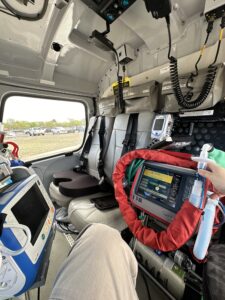
“Flight EMS programs have traditionally been staffed solely by nurses and paramedics simply because it’s much more cost-effective than putting a physician on a helicopter on a regular basis,” Easter said. “So nurses had established themselves within those roles before the PA profession really began to grow.”
Easter says the EMS committee’s progress has been gradual and occasionally met with resistance from other specialty stakeholders and professions. Still, he remains optimistic about what’s ahead.
“The role of a flight PA is so unique, it’s often overshadowed when it comes to advocacy priorities,” Easter said. “But I definitely think it deserves more focus because there is a large portion of the PA workforce who are really talented and highly trained in emergency services who would be very successful in these jobs.”
Braman and Easter’s advocacy efforts are not limited to the air. They are also working to promote PA involvement elsewhere such as in street medicine, disaster response, telehealth, and other avenues that improve access to care where it’s needed most.
Encouraging Proactive Measures
Braman often encourages his fellow PAs not to wait for the perfect job to appear, but instead to take a more proactive approach. He says enrolling in specialty training programs and actively connecting with administrators and clinicians in their area of interest are good places to start.
“There are so many ways to find your place in medicine—you just have to be willing to seek them out,” said Braman, who asserts the payoff is well worth the effort.
“It’s exhausting work because we’re always busy, but it’s truly rewarding,” he said. “I’ll be physically and mentally drained at the end of my shifts, but at the same time, I always feel emotionally recharged and eager to come back.”
You May Also Like
PA Student Sabrina Leonard Prioritizes Advocacy and Community Involvement
From Language Barriers to Medication Access Challenges, Carlos Amaya Bridges Gaps in Mental Health Services
2025 PA of the Year Transforms Healthcare Through Leadership and Public Service
Thank you for reading AAPA’s News Central
You have 2 articles left this month. Create a free account to read more stories, or become a member for more access to exclusive benefits! Already have an account? Log in.


